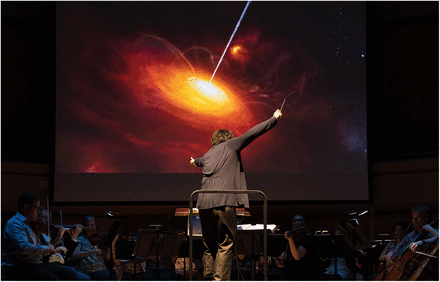Astronomer-turned-filmmaker strives to ignite an interest in space
For scientists at NASA’s Jet Propulsion Laboratory in Pasadena, CA, the night of January 3, 2004 entailed six minutes of nerve-wracking terror. Around 8:30 PM Pacific Time, the Spirit rover began its plunge to the Martian surface, as an audience of engineers and others—temporarily unable to receive any communication from the craft—waited anxiously to get confirmation of its success. Aided by a heat shield, a giant parachute, airbags, and reverse-firing rockets, the rolling robotic laboratory had to decelerate from 12,000 miles per hour to zero miles per hour, with no input from its human designers, who were nervously drumming on their desks in Pasadena. Spirit’s successful landing was a defining moment in the human exploration of Mars.
But how might one capture the gravity of that moment, the tension among observers, the majesty of the feat, and its implications for researchers and the public? Astronomer-turned-filmmaker José Francisco Salgado had some ideas. A few years ago, he put together a film in which that landing event unfolds as a suspenseful, and ultimately heroic, scene. Audiences who attend presentations of the film—one of many in his “Science and Symphony” series—watch a reconstruction of Spirit’s journey on a giant screen while a live orchestra plays “Mars, The Bringer of War” from The Planets, Gustav Holst’s most famous contribution to classical music.
In Salgado’s telling, the visuals and music line up exactly, so that the rover’s stressful fall occurs during a long and building crescendo in Holst’s piece (see https://vimeo.com/46390508).
